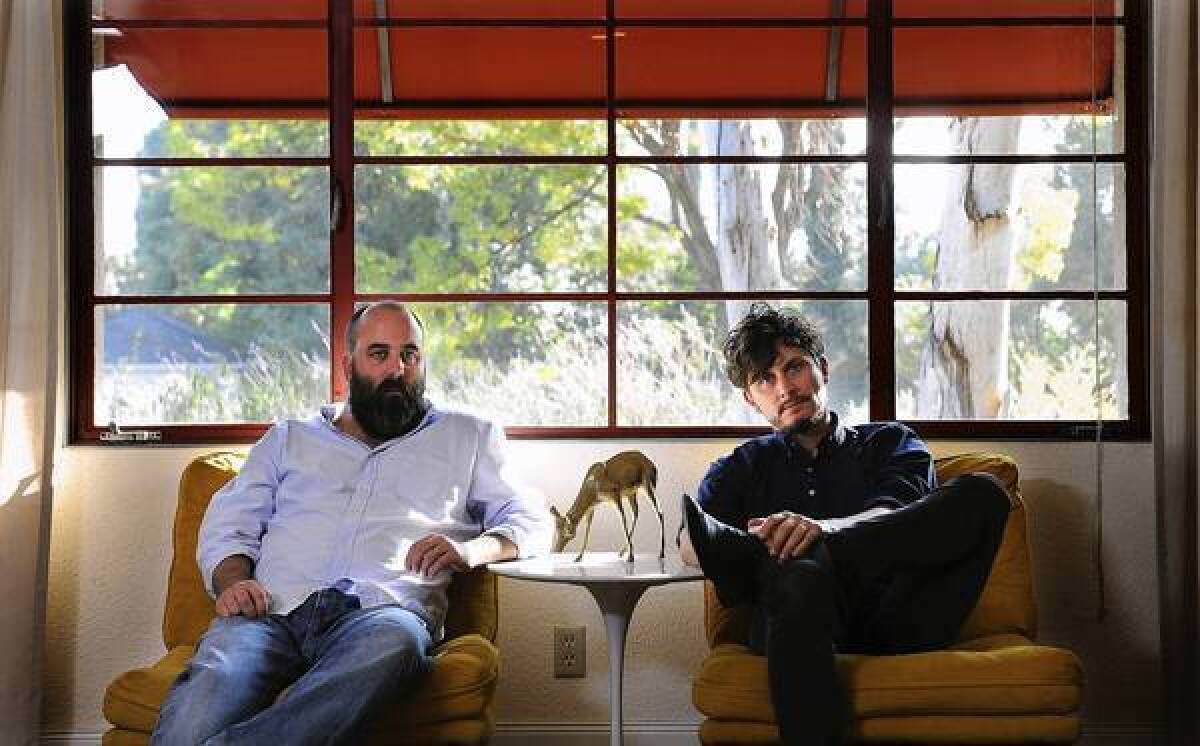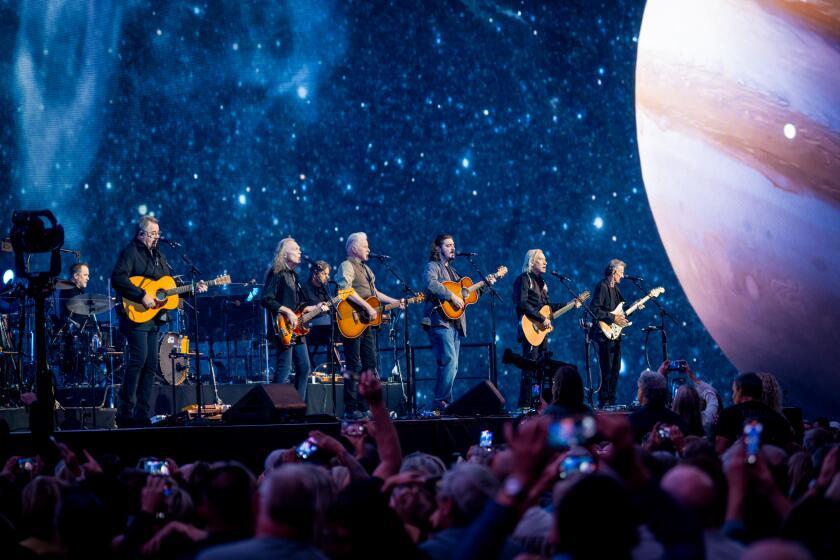âMusic for Sleeping Childrenâ turns teen angst into song

Drama and the adolescent girl: a combo upon which entire industries are built. If the success of Taylor Swift, Justin Bieber, Carly Rae Jepsen, Katy Perry and Rihanna tells us anything, itâs that high drama equals high impact. Swift has built her fortune by speaking to the confusion of youth, first crushes and desire, Bieber by manifesting the same.
âMusic for Sleeping Children,â a recent online project that its creators, Charlie White and musician Bryan Hollon, describe as âan artwork, an archive, and an album,â visits similar terrain (https://musicforsleepingchildren.com/). But it addresses the emotional landscape through very different means: via the true voices of teenage girls openly discussing matters of the heart and the pressures of high school life, all seamlessly arranged as magnetic pop songs.
âSabrinaâ begins as a funky, slow house track, with a big beat and synthetic hand claps, and introduces the namesake girl as an overachiever whose biggest fear is ânot realizing my dreams, kind of.â We learn about âGeorgiaâ through an â80s-style dance pop jam, which opens with Georgia explaining that âa lot of people say that Iâm really popular, and it makes me happy, I guess.â âBayleeâ is introduced as a seventh-grader anticipating eighth; Hollon has given her a joyful beat and looped her singing âshimmy-shimmy cocoa popâ while she gazes into the future.
PHOTOS: Celebrity portraits by The Times
Combined, the work is not only a glimpse into the thoughts and feelings of girls today but on a bigger scale is an examination of what White describes as âboth types and archetypesâ of the American teen. Whatâs best, these fascinating confessions have been arranged as pop songs perfect for slumber parties.
White is a professor at the USC Roski School of Fine Arts, known in music circles for his remarkable 2004 video for Interpolâs âEvil,â which featured a freaky puppet dealing with the consequences of a car crash. As an artist, White has long examined teen life, most recently as part of the Los Angeles County Museum of Artâs exhibit, âThe Sun and Other Stars.â His animated pieces, âA life inBTweenâ and âOMG BFF LOL,â employ cheap 1970s-style animation suggestive of Saturday morning cartoons and feature teen girls as cartoon characters in service of short pieces that are both tributes to and satires of the desires of mall culture.
âSleeping Childrenâ is the product of what he describes as âa building desire to create a teen pop album. That was an abstract concept to start with, because there was no notion of what that would sound like, or what that would be.â
PHOTOS: A guide to the top four pop ensembles
Rather than write songs and search for a particular voice, he contacted Hollon, who, under the moniker Boom Bip, is a well regarded musician and producer. As half of the group Neon Neon (with Welsh songwriter Gruff Rhys), Hollon was nominated in 2008 for Britainâs prestigious Mercury Prize, which honors the best album of the year. Hollon and White first worked together in 2009 for a remix related to âOMG BFF LOL.â
âSleeping Childrenâ required real teens from across Southern California, so White hired a casting agent, who booked individuals to sit down with White â and on a few occasions, Hollon too â in a recording studio (along with parents/guardians). With microphones running, Whiteâs goal was to create a âcomfortable, safe space to talk about things.â As such, White didnât photograph the girls and doesnât identify their last names.
In the best cases, says Hollon, sitting with White in the dining room of Hollonâs South Pasadena home, ideas gelled while the microphones were on. âYou could hear them working out how they felt about these subjects for the first time.â The less successful sessions lacked similar honesty or overlapped thematically with more effective ones. When they were finished, each girl had unloaded a few hoursâ worth of information, a tiny portion of which became the lyrics and voices of the songs.
White later explained in an email the reasons for calling the project âMusic for Sleeping Children.â The title, he wrote, âcame from my thinking about the contemporary American teenager as a child (secondary consumer) transitioning into adulthood (consumer) within the âhazeâ or âdreamâ state that is both biological and social. I see the liminal (from child to adult) state of adolescence in contemporary consumer culture as a sleep state, and like sleep, it is a period of dreams and nightmares.â
This idea pushed White and Hollon to find tidbits that illustrated one, the other or both. âWe had to grab maybe 30 seconds of dialogue out of that to create this girlâs personality and to tell an interesting story,â says Hollon. âAnd also to have it fit into a pop format, to where itâs not just her rambling. Itâs got to be rhythmic â something that people can listen to over and over again.â Video clips commissioned by White followed; each transforms the music into a visual work.
White cites âGeorgiaâ as an example. âThere was a candor, a realness to look for, but thereâs also just a tone. âGeorgiaâ was a perfect marriage of her narrative, if you will â âIâm a popular girl whoâs well off in a good place and feel good about myselfâ â but qualitatively, she also sounded like that.â By removing any visual cues, the voices take on a seriousness.
âIsabelleâ is the darkest of the five songs on âSleeping,â and if weâre making filmic comparisons, sheâs the Ally Sheedy in John Hughesâ classic âThe Breakfast Clubâ: the dark, mature-beyond-her-years girl who has a storm cloud in her voice. The song is built around an interview in which the namesake teen speaks about a dating experience earlier in the semester as âreally weird, I admit.â The boy was younger than her, which was âkinda awkward, because thereâs that thing where girls mature faster than boys.â
As a Depeche Mode-ish rhythm jumps in, Isabella turns her attentions to an older 11th- grader. But that, she says, âturned into this big drama,â as an analog synth falls into a slow pattern. So she broke up with him. The song reaches peak momentum, and Isabellaâs story does too, when she describes what happened with the 11th-grader: âHe called me while I was at school and said, âOh, I just wanted to tell you, you know, Iâm in a psych ward.ââ He wasnât suicidal, but his therapist said he needed to let his feelings out. ââAnd I wanted to tell you that Iâm madly in love with you.ââ
Taken in total, the five pieces offer snapshots that, though not detailed portraits, are vivid glimpses of each girl from a particular angle. To say that they captured âtrue selvesâ is a stretch; no two-hour interview could. But whatâs most striking is the way in which the works act as Trojan horses, delivering intimate nonfiction information within a medium, pop music, that most often thrives when conveying bold-faced fictions.
The joy, for example, of the two best friends in âMik & Mel,â who over a catchy dance beat address the intensity of adolescent friendship, is as powerful a lyrical turn as a great pop song: âLike, whenever I need to talk to someone,â says either Mel or Mik, âitâs always, like: best friend, right there.â The other then jumps in to add, âAw, and then in, like, 20 years we can be those cute old ladies with a wraparound porch and those rocking chairs, and we can talk about our lives.â
Taylor Swift couldnât have said it better.
PHOTOS AND MORE
PHOTOS: Iconic rock guitars and their owners
The Envelope: Awards Insider
PHOTOS: Unfortunately timed pop meltdowns
More to Read
The biggest entertainment stories
Get our big stories about Hollywood, film, television, music, arts, culture and more right in your inbox as soon as they publish.
You may occasionally receive promotional content from the Los Angeles Times.










